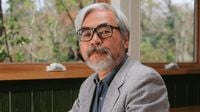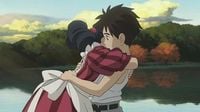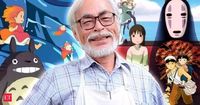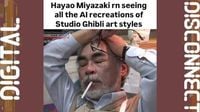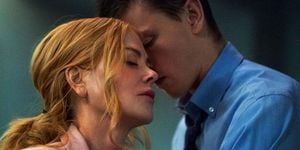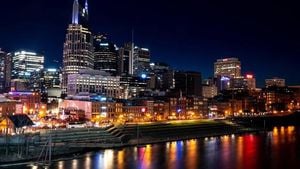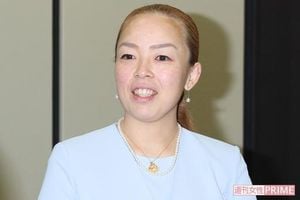As artificial intelligence continues to evolve, a fascinating intersection of technology and artistry has emerged, particularly through the lens of Studio Ghibli and its iconic co-founder, Hayao Miyazaki. Following the release of OpenAI's latest image generation tool, GPT-4o, the internet has been buzzing with a trend dubbed "Ghiblification," where users transform their personal photos and even memes into the enchanting, hand-drawn style reminiscent of Miyazaki's beloved animations.
Studio Ghibli-style images have become a viral sensation, captivating audiences worldwide. The trend took off after OpenAI unveiled its advanced image generator, allowing fans to create Ghibli-inspired visuals with ease. However, this innovation has sparked a heated debate about the implications of AI-generated art, especially considering Miyazaki's long-standing criticism of such technologies.
Born in Tokyo in 1941, Miyazaki's journey into animation began in 1963. After honing his craft through various projects, he co-founded Studio Ghibli in 1985 alongside director Isao Takahata and producer Toshio Suzuki. The studio quickly gained acclaim for its unique storytelling and stunning hand-drawn animations, which have become a hallmark of the Ghibli brand.
Miyazaki's films often blend the mundane with the fantastical, showcasing complex characters and themes that resonate deeply with audiences. His commitment to traditional animation techniques is evident in the meticulous detail of each frame, a quality he believes is essential to preserving the soul of art. In a 2021 interview with The New York Times, he stated, "I believe that the tool of an animator is the pencil," highlighting his disdain for digital shortcuts.
In a 2016 documentary, "Never-Ending Man: Hayao Miyazaki," the animator expressed his aversion to AI-generated art, calling it an "insult to life itself." He famously remarked, "I am utterly disgusted... I would never wish to incorporate this technology into my work at all. I strongly feel that this is an insult to life itself." Miyazaki's passionate response to a demonstration of AI animation reflected his belief that such creations lack the emotional depth and understanding of human experience.
Fast forward to 2025, and the Ghibli style has been reinterpreted through AI, with social media flooded by whimsical portraits and scenes generated from users' prompts. This phenomenon has even caught the attention of OpenAI's CEO, Sam Altman, who embraced the trend by changing his profile picture to an AI-generated Ghibli image. Yet, amidst the excitement, the ethical implications of AI art loom large.
The Ghiblification trend has sparked discussions about the authenticity of creativity in an age dominated by machine-generated content. While many users delight in the charming results, the questions Miyazaki raised years ago about the essence of art and the human touch remain relevant. As the internet revels in AI's ability to replicate the Ghibli aesthetic, one must consider whether the emotional resonance of Miyazaki's work can ever be captured by algorithms.
Studio Ghibli has remained notably silent on the AI-generated Ghibli images, leaving fans and critics to speculate about Miyazaki's thoughts on this modern twist in the art world. The studio has built its legacy on the painstaking artistry of hand-drawn animation, which raises concerns about the future of creative expression in the face of advancing technology.
In a world where AI-generated content is becoming increasingly mainstream, the delicate balance between innovation and ethical responsibility is more critical than ever. OpenAI's GPT-4o model has been praised for its ability to generate high-quality images based on user prompts, but the company has also faced scrutiny regarding creative rights. Within 24 hours of the launch, OpenAI restricted access to the Ghibli-style image generation feature for free-tier users, citing concerns over intellectual property.
As the debate continues, it is clear that the allure of AI art is growing, with companies like OpenAI encouraging experimentation with the aesthetics of famous creators. Yet, as Miyazaki's words echo through this digital landscape, they serve as a reminder of the importance of preserving the human spirit in art. The Ghibli films are not merely visual spectacles; they embody a connection to nature, humanity, and the complexities of life.
Miyazaki’s works often reflect his deep-seated beliefs in pacifism and environmentalism, themes that resonate in films such as "Princess Mononoke" and "Porco Rosso." His commitment to storytelling that challenges societal norms and encourages reflection on the human condition is what sets Ghibli apart from other animation studios. As AI-generated art continues to flood social media, the question remains: can technology replicate the heart and soul that Miyazaki poured into his films?
Ultimately, the Ghibli-style images generated by AI may capture the visual charm of Miyazaki's work, but they cannot replicate the emotional depth and narrative richness that define his storytelling. As the world embraces this new wave of creativity, it is essential to remember the value of human artistry and the stories that connect us all. Hayao Miyazaki's legacy serves as a poignant reminder of the beauty of hand-drawn animation and the importance of preserving the soul of art in an increasingly digital world.
